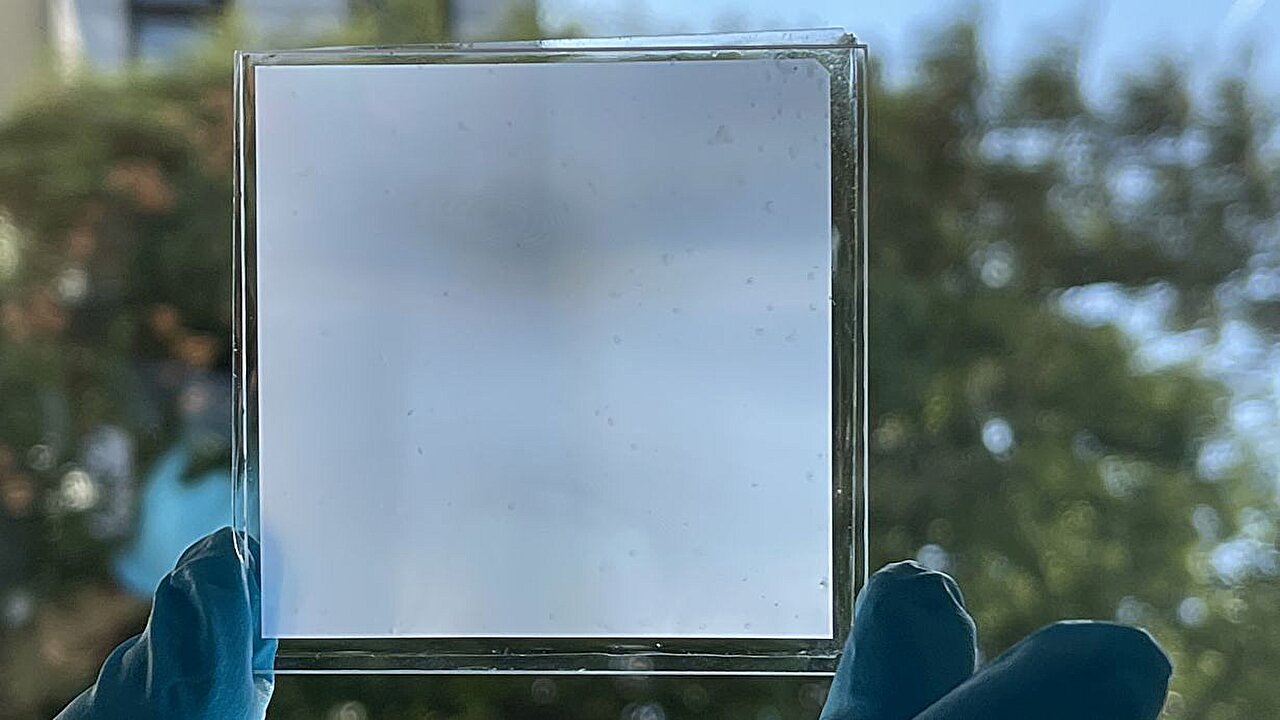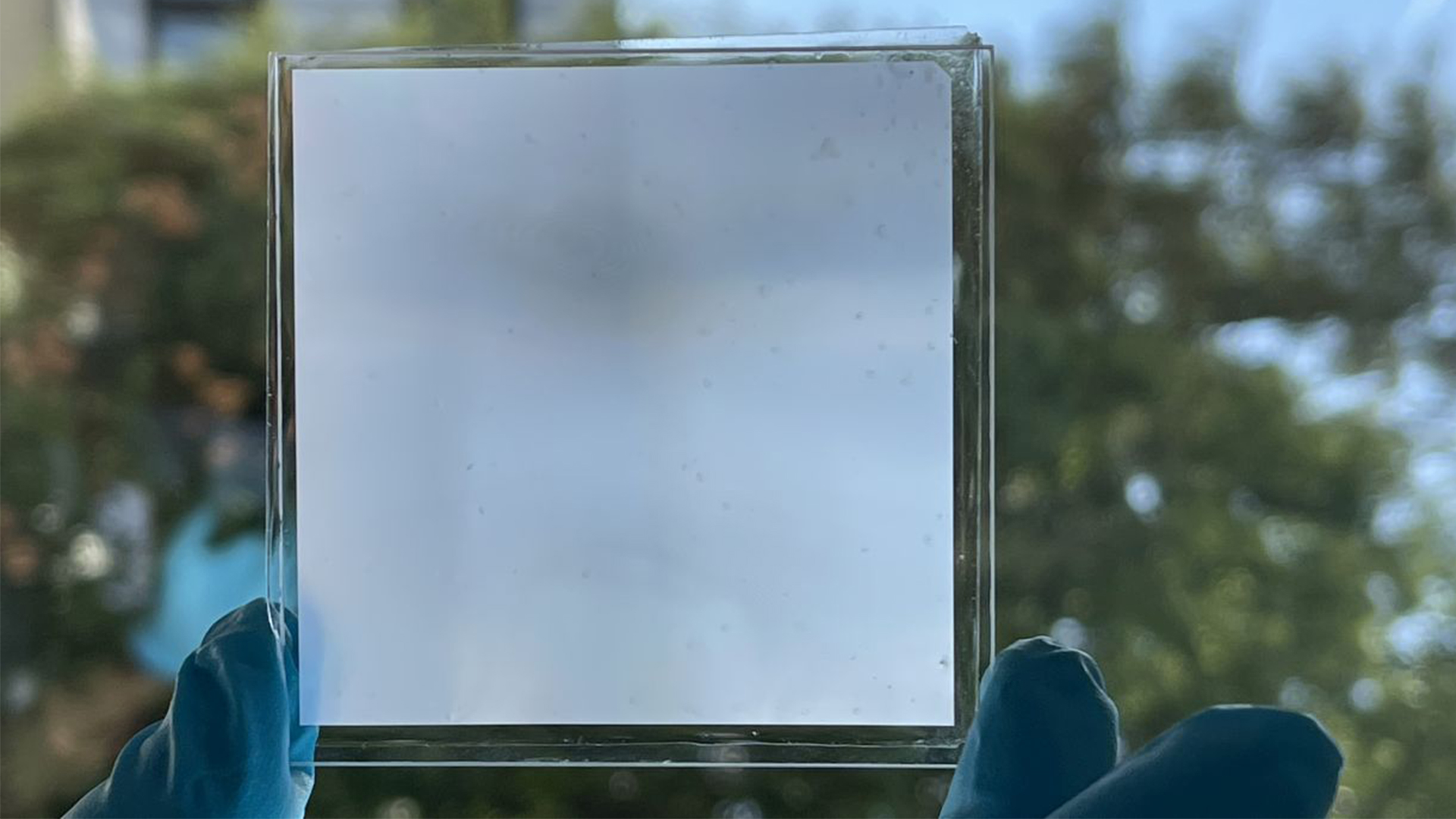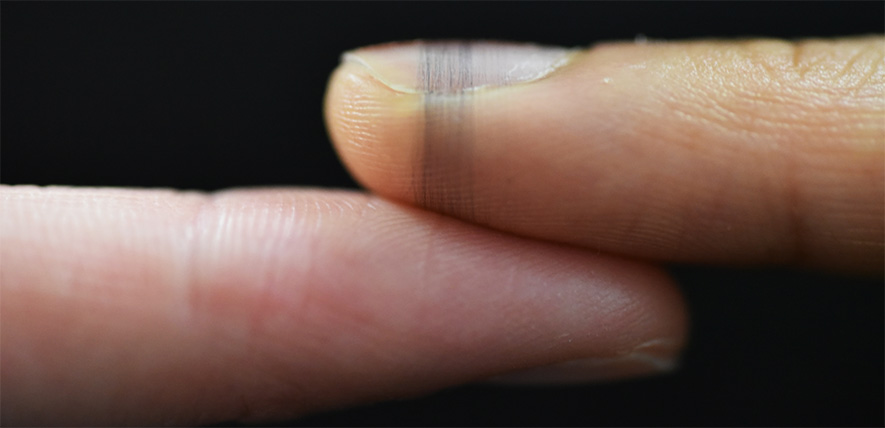New Polymer-Based Metamaterial Revolutionizes Energy-Efficient Building Design
Researchers at the Karlsruhe Institute of Technology (KIT) have developed a groundbreaking polymer-based metamaterial that could revolutionize energy-efficient building design. The material, known as polymer-based micro-photonic multi-functional metamaterial (PMMM), combines multiple functions such as light diffusion, self-cleaning, and radiative cooling while maintaining high transparency. This innovative material has the potential to replace traditional glass components in construction, offering a more sustainable and cost-effective solution.
In outdoor tests conducted on the KIT campus, the PMMM film demonstrated impressive properties, including a 6°C cooling effect compared to ambient temperature, 95% spectral transmittance, and self-cleaning capabilities similar to a lotus leaf. The material’s ability to optimize sunlight exposure indoors, provide passive cooling, and reduce the need for artificial lighting and air conditioning makes it an attractive option for environmentally friendly building construction and urban development.
With its potential to enhance indoor comfort, energy efficiency, and sustainability, the new polymer-based metamaterial represents a significant advancement in the field of architecture and construction. As researchers continue to explore its applications and benefits, the future of building design looks brighter and more environmentally conscious than ever before.
Revolutionizing Sustainable Architecture with Self-Cleaning Metamaterial Technology
The development of a transparent and self-cleaning polymer-based metamaterial by researchers at the Karlsruhe Institute of Technology (KIT) is poised to revolutionize sustainable architecture and construction practices. By incorporating microscopic pyramids made of silicone, the polymer-based micro-photonic multi-functional metamaterial (PMMM) offers a unique combination of properties that address key challenges in building design.
Through a series of laboratory tests and outdoor experiments, the PMMM film has demonstrated remarkable performance in terms of light transmittance, light scattering, reflection properties, self-cleaning ability, and cooling efficiency. With a cooling effect of 6°C and a high spectral transmittance of 95%, the material surpasses traditional glass components in terms of energy efficiency and functionality. Additionally, the self-cleaning properties of the material make it easy to maintain and durable, reducing the need for frequent cleaning and maintenance.
As architects and urban planners seek innovative solutions to enhance building performance and sustainability, the transparent and self-cleaning metamaterial developed by KIT researchers offers a promising avenue for achieving these goals. By integrating this advanced material into future construction projects, it is possible to create energy-efficient, comfortable, and environmentally friendly indoor spaces that benefit both occupants and the planet.
Unveiling the Future of Energy-Efficient Building Materials: The PMMM Metamaterial
The introduction of a polymer-based micro-photonic multi-functional metamaterial (PMMM) by researchers at the Karlsruhe Institute of Technology (KIT) marks a significant milestone in the development of energy-efficient building materials. Combining properties such as light diffusion, self-cleaning, and radiative cooling, the PMMM film offers a versatile and sustainable alternative to traditional glass components in construction.
In real-world outdoor tests conducted on the KIT campus, the PMMM film demonstrated its ability to enhance indoor comfort, reduce energy consumption, and improve overall building performance. With a high spectral transmittance of 95% and a cooling effect of 6°C, the material outperforms conventional glass in terms of transparency and thermal regulation. Furthermore, the self-cleaning properties of the material make it easy to maintain and resistant to dirt and dust accumulation.
As the demand for energy-efficient and environmentally friendly building materials continues to grow, the transparent and self-cleaning metamaterial developed by KIT researchers offers a promising solution for architects, builders, and developers. By harnessing the power of innovative materials like the PMMM film, the future of sustainable architecture looks brighter and more promising than ever before.



